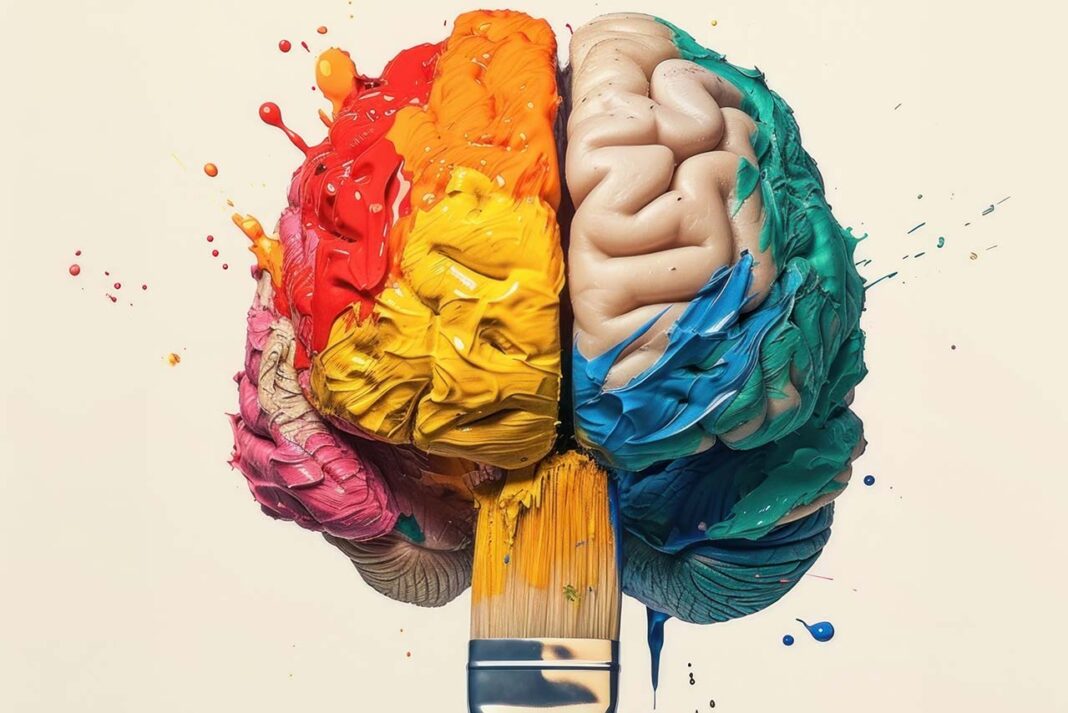When we think of creativity, what often comes to mind is a sudden “spark of inspiration.” Yet, this spark is the result of millions of silent neural connections formed over hours, days, or even years in our brain. A song you hear during a morning walk might awaken a forgotten childhood memory. In that moment, your brain invites past and present, emotion and thought, into a silent dance. Creativity is the expression of this dance. But how does our brain manage this complex and invisible process?
The Role of the Brain in Creativity
In neuropsychology, creativity is not confined to a single area of the brain. Regions such as the prefrontal cortex, limbic system, and parietal lobe work in synchronized networks. One especially important system is the default mode network (DMN), which activates during daydreaming and free association. This is why creative ideas often emerge while walking or sitting idly.
For instance, a painter’s first brushstroke or a writer’s opening sentence is made possible through the rich and balanced communication between the brain’s left and right hemispheres. Research shows that highly creative individuals tend to have stronger connections between these hemispheres. This enhanced connectivity allows the mind to break away from conventional patterns of thought.
Emotions, Memory, and the Creative Mind
Speaking from personal experience, creativity is often nourished more by the inner world than the outer one. A scent, a distant melody, or a gentle breeze can open a door in the unconscious, bringing back a memory and its emotional tone. The hippocampus integrates these past memories with present feelings, and sometimes this fusion emerges as a sentence or an image.
To view creativity merely as an “inborn talent” overlooks the brain’s intricate, multilayered functioning. Emotions like stress, anxiety, or trauma can sometimes hinder the creative process or, at times, ignite it. As the brain constantly adapts to survive, it finds new pathways. Creativity often arises from the discovery of these new neural routes.
Creativity as a Multilayered Communication
Creativity is not just about generating new ideas; it’s a multilayered form of communication shaped by the brain’s interaction with emotions, memories, and the environment. From a neuropsychological perspective, creative processes are not accidental; they are the result of a prepared and connection-ready mind.
Everyone who creates—whether through art or other means—speaks the brain’s unique language. The key is learning to hear that language, to find stillness, and to truly listen to the inner voice.
References
-
Beaty, R. E., Benedek, M., Kaufman, S. B., & Silvia, P. J. (2016). Default Mode Network Engagement During Creative Idea Production. NeuroImage, 120, 145–152.
-
Jung, R. E., & Haier, R. J. (2007). The Parieto-Frontal Integration Theory (P-FIT) of Intelligence: Converging Neuroimaging Evidence. Behavioral and Brain Sciences, 30(2), 135–154.
-
Dietrich, A. (2004). The Cognitive Neuroscience of Creativity. Psychonomic Bulletin & Review, 11(6), 1011–1026.
-
Sawyer, R. K. (2011). Explaining Creativity: The Science of Human Innovation. Oxford University Press.
-
Fink, A., & Benedek, M. (2014). EEG Alpha Power and Creative Ideation. Neuroscience & Biobehavioral Reviews, 44, 111–123.


